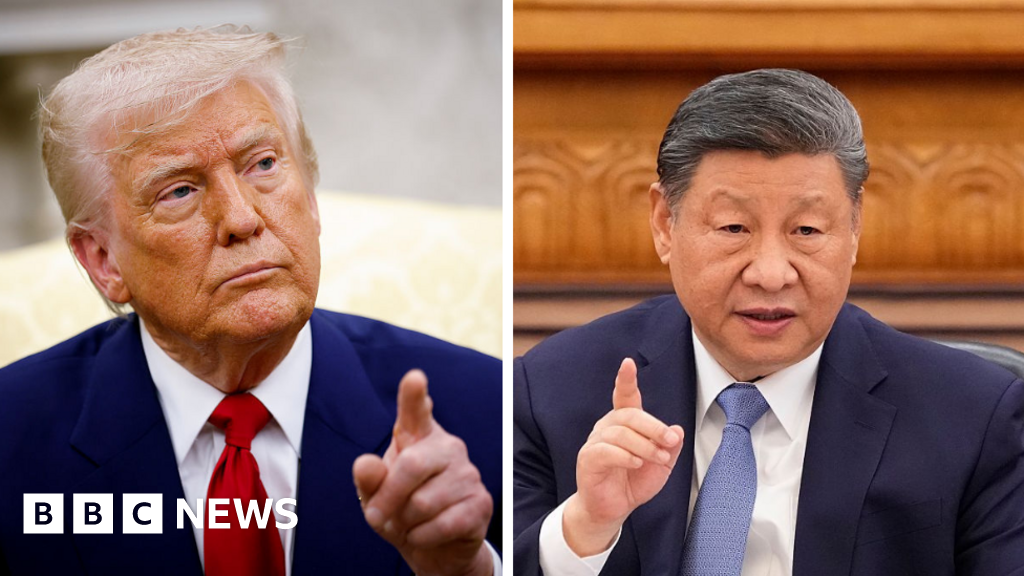 Oil extraction in the Orinoco Belt, southeastern Venezuela. The crude extracted from this rich basin is very heavy and requires blending with diluent oil for refining—a process previously handled by U.S. company Chevron, which must now cease operations in the country. Credit: PDVSA
Oil extraction in the Orinoco Belt, southeastern Venezuela. The crude extracted from this rich basin is very heavy and requires blending with diluent oil for refining—a process previously handled by U.S. company Chevron, which must now cease operations in the country. Credit: PDVSA CARACAS, Apr 25 (IPS) - Reduced to a marginal oil producer over the past decade, Venezuela has suffered another blow as United States president Donald Trump ordered punitive measures to blockade and further restrict the country’s oil exports.
Venezuelan crude will likely navigate the fringes of global oil trade and finance, flowing toward Asian markets as the government seeks to avoid financial suffocation—possibly without ruling out new negotiations with Washington.
"Venezuela has been very hostile to the United States and the Freedoms which we espouse. Therefore, any Country that purchases Oil and/or Gas from Venezuela will be forced to pay a Tariff of 25% to the United States on any Trade they do with our Country," Trump wrote on his media platform Truth Social on March 24.
Simultaneously, Trump revoked licenses allowing U.S. firms Chevron and Global Oil Terminals, Spain’s Repsol, France’s Maurel & Prom, India’s Reliance, and Italy’s Eni to operate in Venezuela.
The foreseeable outcome "will be a drop in oil production—possibly over 100,000 barrels per day—with lower revenues and difficulties in placing crude on the black market," Francisco Monaldi, a fellow at Rice University’s Baker Institute’s Center for Energy Studies, told IPS.
Venezuela, which once produced three million barrels (159 liters each) per day in the early 2000’s, has seen a decline since 2013, falling below 400,000 barrels in 2020.
 Until the beginning of this century, Venezuela was a major oil producer and exporter, thanks to the vast reserves in the Maracaibo Lake basin in the west. Although underground reserves remain enormous, production has declined, and the country has lost its leading role in the global hydrocarbon market. Credit: Mdnava / Fe y Alegría
Until the beginning of this century, Venezuela was a major oil producer and exporter, thanks to the vast reserves in the Maracaibo Lake basin in the west. Although underground reserves remain enormous, production has declined, and the country has lost its leading role in the global hydrocarbon market. Credit: Mdnava / Fe y AlegríaThis is a stark contrast to its history as the world’s second-largest producer and top exporter a century ago, a co-founder of OPEC in 1960, and still home to the largest crude reserves—over 300 billion barrels.
The collapse of the industry and state-owned PDVSA resulted from a mix of dwindling investments, neglected maintenance, erratic management, and bad deals—all amid economic and social collapse and intense political strife.
Moreover, corruption has reached such heights that several former Energy Ministers and presidents of PDVSA have been imprisoned, while others are fugitives abroad. According to the Venezuelan chapter of Transparency International, the amounts that "evaporated" without ever reaching state coffers add up to tens of billions of dollars.
Additionally, Washington imposed escalating sanctions on Venezuelan political and military leaders, with severe effects on PDVSA’s supplies and operations, the Central Bank, and other state entities.
GDP shrank to a quarter of its early-2000s level, hyperinflation reached six digits, income-based poverty hit 90%, and eight million Venezuelans—one in four—left the country.
However, since 2022, Washington’s green light for Chevron and other foreign firms helped production recover to 760,000 barrels per day in 2023, 857,000 in 2024, and 913,000 in March 2025, according to OPEC’s secondary sources.
Chevron accounted for 25% of this output, with PDVSA handling the rest. The U.S. firm also facilitated the import of 50,000 barrels of diluent daily to blend with Venezuela’s heavy crude, In order to improve and facilitate refining.
"It is assumed PDVSA will take over Chevron’s fields, but a drop is inevitable," Andrés Rojas, editor of Venezuelan oil journal Petroguía, told IPS.
 An oil tanker docks at the Waidiao terminal in Zhejiang province, eastern China. The Asian giant is the primary destination for Venezuelan oil, and this flow may increase as Venezuela loses its U.S. market due to new sanctions imposed by President Donald Trump. Credit: Zhejiang Municipal Government
An oil tanker docks at the Waidiao terminal in Zhejiang province, eastern China. The Asian giant is the primary destination for Venezuelan oil, and this flow may increase as Venezuela loses its U.S. market due to new sanctions imposed by President Donald Trump. Credit: Zhejiang Municipal GovernmentThe impact
Monaldi explains that of Venezuela’s 700,000 daily exportable barrels, half went to "licensed destinations" (mainly the United States, Europe, and India), while the rest went to China (as debt repayment) and Cuba.
Economist Asdrúbal Oliveros, head of Ecoanalítica, consulting firm, estimates Venezuela will lose over US$3 billion this year from Chevron’s withdrawal, leaving external revenues at no more than US$13 billion for its 29 million people.
Government "revenues will plummet because PDVSA will struggle to produce (due to shortages of materials and spare parts), secure diluents, and invest in projects," Monaldi said.
The expert explains that PDVSA will have to return to the black market, using practices such as transferring crude oil at sea or in the Strait of Malacca in Southeast Asia to vessels different from those originally dispatched.
This way, the oil reaches its destination, usually China, labeled as being produced in Malaysia or another part of the world.
However, these distant and complicated routes have the dual effect of increasing costs—including freight and insurance—and reducing revenue, as the oil must be sold at discounts of 30% or more compared to prices on the regular market.
Meanwhile, the trade, economic, and financial shock triggered by Trump’s tariff storm this month is driving oil prices down, with current benchmarks like West Texas Intermediate (WTI) at US$63 and North Sea Brent at US$67 per barrel.
 Oil transfers between tankers take place offshore or near international trade hubs, such as the Strait of Malacca in Asia. This method, though riskier and costlier, is used as a black-market mechanism to evade sanctions like those imposed by Washington on Venezuela. Credit: Verdemar
Oil transfers between tankers take place offshore or near international trade hubs, such as the Strait of Malacca in Asia. This method, though riskier and costlier, is used as a black-market mechanism to evade sanctions like those imposed by Washington on Venezuela. Credit: VerdemarBlack market challenges
In April of this year, two oil tankers—the Bahamian-flagged Carina Voyager and the Marshall Islands-registered Dubai Attraction—loaded 500,000 and 350,000 barrels of crude, respectively, at Venezuelan terminals. The oil was initially meant to be transported by Chevron to refineries on the U.S. Gulf Coast.
However, the vessels had to turn around and return to Venezuelan ports after state-run PDVSA realized it would not be able to collect payment for the shipments due to Washington’s sanctions. The cargoes will now be diverted to Venezuela’s top Asian client: China.
"PDVSA has done this since 2019 with Russian and Iranian support, using two or three intermediaries to deliver the loads," Rojas noted.
In addition to the higher costs stemming from intermediaries, longer distances, and increased risks, Rojas points out that Venezuelan crude is heavier than benchmark Brent and WTI oils, meaning its price per barrel is roughly US$10 lower.
Monaldi notes that even if China disregards Washington’s threat to hike tariffs on Venezuelan oil imports—or Malaysia, where much of this black-market trade flows—risk premiums will rise, and Venezuela will bear the brunt by receiving insufficient diluents for its heavy crudes.
 The Carina Voyager, one of the Bahamian-flagged tankers chartered by Chevron in April to transport Venezuelan crude to refineries on the U.S. Gulf Coast, had to turn around and return its cargo. PDVSA made the decision after realizing payment would be impossible due to Trump’s sanctions. Credit: Sun Enterprises
The Carina Voyager, one of the Bahamian-flagged tankers chartered by Chevron in April to transport Venezuelan crude to refineries on the U.S. Gulf Coast, had to turn around and return its cargo. PDVSA made the decision after realizing payment would be impossible due to Trump’s sanctions. Credit: Sun Enterprises"The situation is extremely complicated, and this will likely push the Venezuelan economy—which had been experiencing modest growth in recent years (2.6% in 2023 and 5.0% in 2024, according to the Venezuelan Finance Observatory)—back into recession, possibly as early as 2025," the expert warns.
Monaldi adds that the recession will come alongside a sharp depreciation of the bolívar against the dollar (already over 50% since January) and, consequently, higher inflation, which Ecoanalítica estimates could reach 189% this year.
In this new game, even American oil importers lose out—they had benefited from cheaper Venezuelan crude, which allowed them to free up United States oil volumes for higher-priced exports to third countries, Rojas noted.
He also points out that Chevron’s withdrawal "hurts communities like Soledad" (a town of 35,000 in southeastern Venezuela), where a health center relied on support from the corporation as part of its social responsibility program.
And, as a final blow to Venezuela’s setbacks, two South American neighbors—once net importers of its oil—have now joined the thriving club of exporters welcomed by Washington: Brazil, which produces 3.4 million barrels per day, and Guyana, now pumping 650,000 barrels daily.
© Inter Press Service (2025) — All Rights Reserved. Original source: Inter Press Service

 1 month ago
16
1 month ago
16










 English (US) ·
English (US) ·